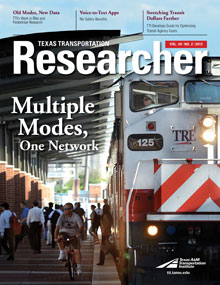New research findings suggest that voice-to-text applications offer no real safety advantage over manual texting.

Sponsored by the Southwest Region University Transportation Center and conducted by the Texas A&M Transportation Institute (TTI), the first-of-its-kind study is based on the performance of 43 research participants driving an actual vehicle on a closed course. The TTI analysis is the first to compare voice-to-text and manual texting on a handheld device in an actual driving environment.
Drivers first navigated the course without cell phones and then traveled the course three more times performing a series of texting exercises: once using each of two voice-to-text applications (Siri® for the iPhone and Vlingo® for Android) and once texting manually. Researchers then measured the time it took each driver to complete the tasks. They also noted how long it took for the driver to respond to a light that came on at random intervals during the exercises.
TTI Associate Transportation Researcher Christine Yager, who managed the study, says the findings offer new insight but only a part of the knowledge needed to improve roadway safety. “Understanding the distracted driving issue is an evolving process, and this study is but one step in that process,” she says. Another TTI study now under way examines the motivations and attitudes of distracted drivers. Results from the focus groups and a 3,000-driver survey are expected in late summer and will look at which demographic groups are most affected by distracted driving.
The study elicited widespread interest as evidenced by its media reach around the globe: approximately 8.5 million viewers via broadcast media, 400 million readers (print and online) and 12 million followers via Twitter.



